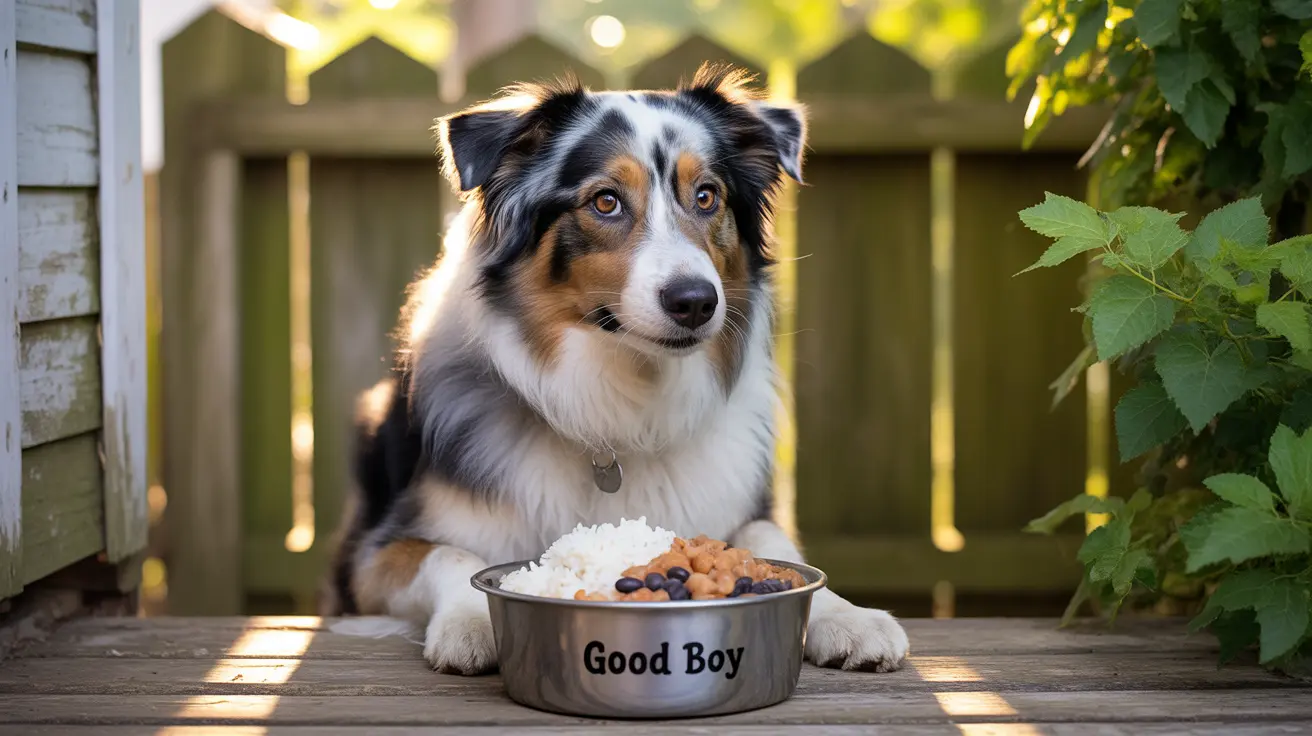Many pet owners wonder about adding human foods to their dog's diet, and rice and beans are common considerations. While dogs can indeed eat rice and beans, it's crucial to understand the proper preparation methods, safe varieties, and appropriate serving sizes to ensure your furry friend's health and safety.
In this comprehensive guide, we'll explore everything you need to know about feeding rice and beans to your dog, including nutritional benefits, potential risks, and best practices for preparation.
Safe Types of Rice and Beans for Dogs
Not all varieties of rice and beans are created equal when it comes to canine consumption. White rice is often recommended by veterinarians for dogs with upset stomachs due to its easy digestibility. Brown rice, while more nutritious, contains higher fiber content and may be harder for some dogs to digest.
Safe bean varieties for dogs include:
- Black beans
- Pinto beans
- Navy beans
- Green beans
- Garbanzo beans (chickpeas)
- Cooked kidney beans
Unsafe Bean Varieties to Avoid
Several types of beans can be dangerous or toxic to dogs:
- Raw kidney beans
- Fava (broad) beans
- Castor beans
- Coffee beans
- Refried beans
- Baked beans with additives
Proper Preparation Methods
The key to safely feeding rice and beans to your dog lies in proper preparation. Always cook both rice and beans thoroughly without any seasonings, oils, or additives. Never serve raw or undercooked beans, as they can be toxic and difficult to digest.
Follow these preparation guidelines:
- Cook rice until soft and fluffy
- Boil beans until completely tender
- Avoid adding salt, spices, or seasonings
- Let cool before serving
- Rinse canned beans thoroughly if used
Health Benefits and Serving Sizes
When prepared properly, rice and beans can offer several nutritional benefits for dogs. Rice provides easily digestible carbohydrates for energy, while beans offer protein, fiber, and essential vitamins and minerals.
Recommended serving sizes depend on your dog's size:
- Small dogs (under 20 lbs): 1-2 tablespoons
- Medium dogs (20-50 lbs): 2-3 tablespoons
- Large dogs (over 50 lbs): 3-4 tablespoons
Potential Risks and Warning Signs
While rice and beans can be healthy additions to your dog's diet, there are some risks to consider. Watch for signs of digestive upset, including:
- Excessive gas
- Bloating
- Diarrhea
- Constipation
- Vomiting
If you notice any of these symptoms, reduce or eliminate rice and beans from your dog's diet and consult your veterinarian if symptoms persist.
Frequently Asked Questions
Can dogs eat rice and beans together as part of their regular diet?
Yes, dogs can eat rice and beans together as part of their diet, but they should only make up a small portion of their overall food intake. The majority of their diet should still consist of high-quality dog food with adequate animal protein.
What types of beans are safe for dogs to eat, and which should I avoid?
Safe beans include cooked black beans, pinto beans, navy beans, green beans, and garbanzo beans. Avoid raw kidney beans, fava beans, castor beans, coffee beans, and any beans with seasonings or additives.
How much rice and beans can I safely give my dog without causing stomach upset?
Start with small portions (1-2 tablespoons for small dogs, 2-3 for medium dogs, and 3-4 for large dogs) and monitor their reaction. Adjust portions based on your dog's tolerance and always serve as part of a balanced diet.
Can rice and beans help with my dog's digestive problems or diarrhea?
Plain white rice can help firm up loose stools and settle an upset stomach. However, beans should be avoided during digestive issues as they may cause additional gas or discomfort.
What are the best ways to prepare rice and beans for my dog to ensure they're safe?
Cook both rice and beans thoroughly without any seasonings, oils, or additives. Ensure beans are completely tender and rice is fully cooked. Let cool before serving and always start with small portions.
Conclusion
Rice and beans can be healthy additions to your dog's diet when prepared properly and served in moderation. Always introduce new foods gradually, monitor your pet's reaction, and consult with your veterinarian if you have specific concerns about your dog's dietary needs.






